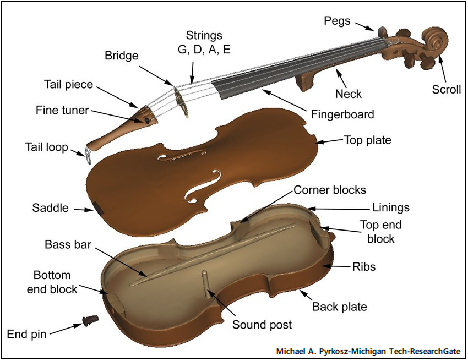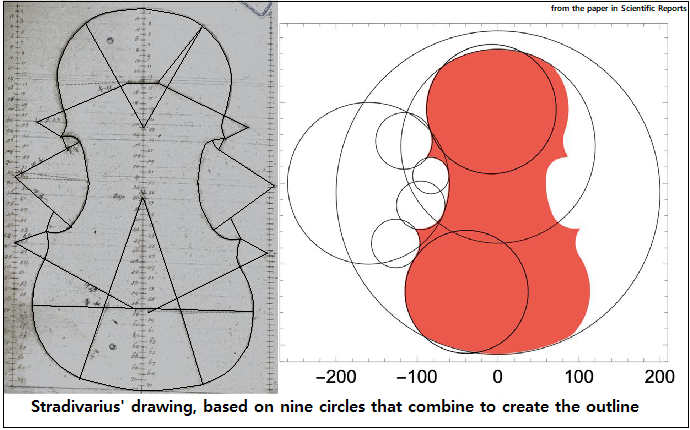AI and simulation may rival Stradivarius, says S.Ananthanarayanan.
Musical instruments are known for complexity and precision, and the violin rank as one of the most complex. The present form of the violin first appeared in the early 16th century, and the present violins follow the designs of master violin makers of the 18th century. Extremely high quality is now attained, but it has not been possible to match the 18th century masterpieces.
Sebastian Gonzalez, Davide Salvi, Daniel Baeza, Fabio Antonacci and Augusto Sarti, from the Musical Acoustics Lab at the Violin Museum of Cremona, part of the Polytechnic of Milan, and the faculty of physical and mathematical sciences, University of Chile, describe in the journal, Scientific Reports, how they have used artificial intelligence to peer into the internals of the 18th century violins, to understand the factors that made for their exquisite performance.
The characteristic of musical instruments is that each kind of instrument can produce the notes of musical scales according to its own quality of sound, and do it consistently. This is to say that the notes of a piano, for instance, have a similar purity or quality, or the mix of overtones, right through the different octaves. So also, a violin, or a trumpet, has its own quality, and a skilled player can bring out sounds, typically of the violin or the trumpet, of different pitch and loudness, or softness, to create music.
Building instruments to do this needs accurate balancing of a number of features, so that sounds produced are consistent in quality through the range of pitch and loudness that is possible with the instrument. For instance, the thickness and material of piano strings need to be just so. And the material of the soundboard, the materials of the hammers, need to match and go together, so that the piano is suitable for a range of compositions. The design of the modern piano, hence, represents elaborate and sensitive coordination of its different parts.
The violin is much smaller than a piano, and has much fewer parts. Its design, however, is not less complex. With just four strings, and not longer than a child’s arm, the violin can produce notes of great purity and power, over nearly four octaves. To be able to do this consistently over its range, many parts of the violin need to be accurately shaped and in keeping with the properties of materials used. The design of the violin took more than two centuries to grow to its present state. And the growth took place with the concerted trial and error work of violin makers, violinists and composers, to make the best use of, and exacting demands on the violin’s capability.
The first step in making a violin is shaping of the sides, the outline of the violin. This is done by creating a mould, and bending selected strips of wood, called the ribs, into the desired contour. When this is made, the specially carved bottom and top are attached, to create the resonating hollow for the sound when the strings are bowed. Next, the neck, a piece of wood that is shaped out of a single piece of wood, is fixed to the body, to complete the structure.
As shown in the picture, the strings are attached from the tailpiece, over the bridge and to the pegs. The pegs enable the tension of the strings to be adjusted and there is provision, between the bridge and the tailpiece, for fine adjustment. Once the tension of the four strings are set, the note that any string sounds can be changed by the violinist’s finger pressing the string on to the fingerboard. And after everything is in place, it takes fine correction over months, or years, for the violin to attain full timbre and volume.

The current shape, or outline of the violin has come about after several iterations during the first 200 years of its development, the paper in Scientific Reports says. However, even geometrically exact copies cannot equal the perfection attained by the old masters. This suggests that the difference may lie in the material, the wood sourced three centuries ago. Current violin makers have thus attempted ‘tweaking’ of the shape, to compensate. Without, however, any notable success, as there is yet no science of how the contours affect and could improve the sound of a violin.
The authors of the paper hence used a different approach. They make use of computers and the methods of Artificial Intelligence to create a dynamic model of the Stradivari violin and assess the role of the different aspects of its structure. Based on the evolving designs of violins over the centuries, the authors of the paper identified a list of features that affected how the violin performs, as well as units to measure the features. These measures, and the known, main sound frequencies that the violin supported, were then fed into an artificial intelligence computer programme, to work out how far each of the identified features influenced the final product.
Artificial iIntelligence is so called because it is a computer procedure that mimics the way of learning of natural systems, like the human brain. For an infant to learn speech, for instance, the method is not of learning vocabulary and formal rules of grammar, as when an adult learns a foreign language. Instead, the infant brain collects the different sounds that it hears, and the objects, sights or sensations that accompany the sounds. Where certain sensations are repeatedly associated with particular sounds, the infant brain strengthens the connection and associates the sight or sensation with the sound alone – a first step in learning language.
When computer programmes are developed to mimic this process, we get in our hands a powerful means of ‘natural’ learning, for computers can crunch huge data and work continuously for hours. AI programmes, known as machine learning, are hence used to analyse huge data, make weather forecasts, evenn to train road vehicles to drive themselves, or learn a language and work as a translator.

The selection of factors to be considered, the paper says, started from an original drawing by Antonio Stradivarius, preserved in the Violin Museum of Cremona, Italy. We can make out from the copy shown that the outline has been derived from nine circles of different diameters. The position of the centres and the angles further specify the shape, of the ‘ribs’ and the ‘top plate’. The shape is thus constrained by 20 parameters, the paper says, and in addition, there are parameters of the curvature of the top plate
The quality of a violin is determined largely by the sound frequencies that are natural to vibrational modes of the top plate. And these frequencies depend largely on the shape of the plate. The parameters that specify the shape of the plate hence determine the frequencies the plate would support, and hence the sound quality. The relationship, however, is complex indeed, which is why studies so far have not been able to say what effect a change in one of the features would have on the sound produced.
The values of 1,750 sets of the 20 shape parameters and 10 of the corresponding, known, main frequencies were then fed into a machine learning programme to ‘train’ the programme. Next, the parameters of 250 other shapes were fed in, to see if the main frequencies predicted were close to the actual frequencies. The result was that the programme was successful – it was able to learn from the ‘training set’ and make accurate predictions!
The work is a proof in principle, that methods of AI can be used in violin design. This trial described was limited to natural frequencies, but the method can be extended to cover more features and the overall violin performance. “The ability to predict how a violin design sounds can truly be a game changer for violin makers, as not only will it help them do better than the grand masters, but it will also help them explore the potential of new designs and materials,” the paper says
------------------------------------------------------------------------------------------ Do respond to : response@simplescience.in-------------------------------------------